How 'To the Bone' Contributes to the Whitewashing of Eating Disorders
I'm Brown and tired of watching rich white girls struggle.
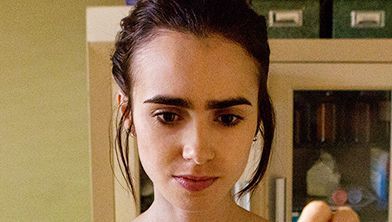
To the Bone opens with smug 20-year-old Ellen proclaiming her victory in a bet against a fellow patient at an eating disorder (ED) treatment center: She's yet again been expelled, just like she said she'd be. Upon arriving back at her oversized suburban home, she tells her Latina housekeeper to stop taking trips to Tijuana for cement lip injections, and later picks through the meal that's been prepared for her—counting every calorie with a precision that she jokes rivals the mathematical affinity of a person with Asperger Syndrome. When Ellen eventually goes back to another recovery center—the family's last hope—she makes the trek in a shimmery new Range Rover.
As a woman of color with a decade-plus history of anorexia, I know first-hand that when girls of color with eating disorders even have the ability to seek treatment, they don't typically have the luxury of refusing it. And as To the Bone receives praise for its authentic portrayal of eating disorders, the stories of women of color with EDs continue to be untold. Rather than perpetuating the narrative that eating disorders are only reserved for white women with money, it's time Netflix—or any company for that matter—release a film focusing on the ED experiences of girls of color.
As a morena Chicana growing up in the ultra-white Bay Area town of Belmont, I learned from the moment that I enrolled in kindergarten as a Spanish-speaking Brown girl that to be thin, and white, and rich was to be ideal. Although my parents immigrated from Mexico and women in our culture are often revered for curvy, hourglass figures—I was raised as an anomaly in a homogenous suburb, and instead sought to achieve the body types of then-It girl icons like Amy Winehouse and Nicole Richie.
One summer day before my freshman year of high school, I discovered the seedy delves of the internet dedicated to ana thinspo, a community of girls suffering from anorexia sharing inspiration and tips. While To the Bone mentions Ellen's Tumblr fame (achieved as a result of her skeletal drawings), it was Myspace that provided me with fodder to fill my mind with Eurocentric beauty ideals, and the desire to attain them. With each click and saved image, my sense of self became further distorted, and over the course of two years I dropped twenty pounds.
Like most girls suffering from eating disorders; family trauma, low self-esteem, and a need for control were major contributors to my demand for starvation. And by the time I reached high school, it was customary for kids to receive BMWs for their first cars and cosmetic surgeries for their graduations. Since I wasn't going to be white or rich anytime soon, I unconsciously figured that if I could achieve thinness, then I could get one step closer to attaining some sense of social status within my world.
Paired with reinforcement from my peers who gawked at my ability to remain a size zero and family members who rechristened me with my childhood nickname of Flaca (Skinny Girl), everything and everyone around me seemed to encourage my self-imposed malnourishment. But when I grew tired of chewing celery sticks throughout the day and eating cottage cheese for every meal to keep grumbles of my stomach at bay, I turned back to the internet. Unlike Ellen, when I finally hit bottom and decided I wanted to get better, I had to do it on my own.
"The problem isn't that stories of white girls with eating disorders are being told, it's that their struggles are the only ones deemed worthy of sharing."
While stories like Ellen's do occur, I—like many other teenage girls—did not have the financial backing of parents who could afford to send their daughter to one in-patient treatment center, let alone five. As detailed in a 2010 New York Times article, the average cost of a month-long residential program is $30,000, and to make matters worse many insurers do not cover the costs of such treatment. While the amount of financial support Ellen's family provides in the film is commendable, it is in no way typical or feasible for most families. Even if by some miracle my single mother could have afforded it on her own, the stigma I was sure to face from my family was a price I could never afford.
Stay In The Know
Get exclusive access to fashion and beauty trends, hot-off-the-press celebrity news, and more.
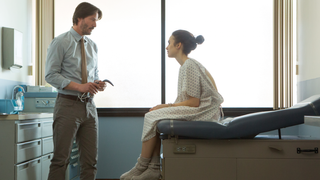
In the twelve years since thinspo changed my life, I have relapsed half a dozen times. Even now, when faced with significant stress or adversity, restricting food intake is programmed as my default. Since triggers like flat stomachs on Instagram Discovery and films like To the Bone abound, I'm grateful for the emergence of women of color-centric eating disorder resources like Gloria Lucas' platform Nalgona Positivity Pride and Stephanie Covington Armstrong's book Not All Black Girls Know How to Eat: A Story of Bulimia.
The problem isn't that stories of white girls with eating disorders are being told, it's that their struggles are the only ones deemed worthy of sharing. This oversimplification contributes to the erasure of eating disorder narratives within communities of color. While it's hard to say whether the whitewashing of eating disorders in film has contributed to the lack of research in the medical field or vice versa, it's ultimately a myth that needs quashing once and for all. And if medical research isn't ready to change the public's perception of eating disorders, maybe a film featuring women of color and their struggles will.
RELATED MOVIE REVIEWS

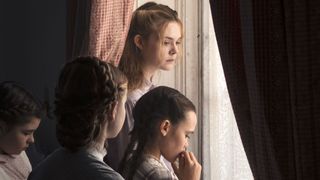

Follow Marie Claire on Facebook for the latest celeb news, beauty tips, fascinating reads, livestream video, and more.
-
 Chrishell Stause Will Play the Villain If She Needs To
Chrishell Stause Will Play the Villain If She Needs ToThe 'Selling Sunset' star has achieved what few (maybe no one) in the reality TV genre has: being a longtime fan favorite. But with her appearance on season 3 of 'Traitors,' she's ready to make enemies and get a little scrappy.
By Brian Moylan Published
-
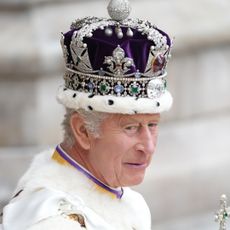 This Unexpected Royal is Richer Than The King
This Unexpected Royal is Richer Than The KingThe top three people on this list might surprise you.
By Kristin Contino Published
-
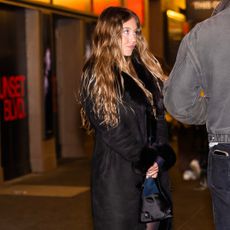 Sydney Sweeney Winterizes a Plunging Mini Dress With a Sheer Turtleneck and a Fur-Lined Penny Lane Coat
Sydney Sweeney Winterizes a Plunging Mini Dress With a Sheer Turtleneck and a Fur-Lined Penny Lane CoatThe star layered all her favorite cold-weather trends for a night on Broadway.
By Hanna Lustig Published
-
 Chrishell Stause Will Play the Villain If She Needs To
Chrishell Stause Will Play the Villain If She Needs ToThe 'Selling Sunset' star has achieved what few (maybe no one) in the reality TV genre has: being a longtime fan favorite. But with her appearance on season 3 of 'Traitors,' she's ready to make enemies and get a little scrappy.
By Brian Moylan Published
-
 'American Primeval' Season 2: Everything We Know
'American Primeval' Season 2: Everything We KnowThe Netflix Western would hardly be the first limited series to come back.
By Radhika Menon Published
-
 A Netflix Series Adaptation of Ana Huang's 'Twisted Love' Series Is Confirmed: What We Know
A Netflix Series Adaptation of Ana Huang's 'Twisted Love' Series Is Confirmed: What We KnowCould this be the next 'Bridgerton' or 'Tell Me Lies?'
By Quinci LeGardye Published
-
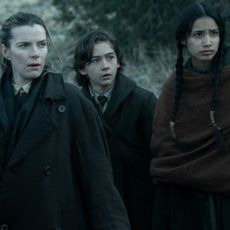 Meet the Cast of 'Americal Primeval'
Meet the Cast of 'Americal Primeval'Taylor Kitsch and Betty Gilpin led the gritty miniseries about a family's trek across the American West in 1857.
By Radhika Menon Published
-
 Meet 'Selling the City' Star Jordyn Taylor Braff: What to Know About Her Career Trajectory and Dating History
Meet 'Selling the City' Star Jordyn Taylor Braff: What to Know About Her Career Trajectory and Dating HistoryShe even had a surprising career path before joining Douglas Elliman.
By Quinci LeGardye Published
-
 'Selling the City' Season 2: Everything We Know
'Selling the City' Season 2: Everything We KnowSurely we haven't seen the last of Eleonora Srugo's Douglas Elliman team and their luxurious listings!
By Quinci LeGardye Published
-
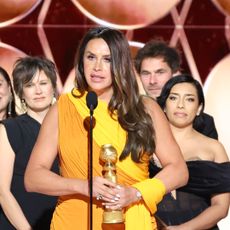 'Emilia Pérez' Star Karla Sofía Gascón Dedicates the Film's Golden Globe Win to the Trans Community: "Raise Your Voice"
'Emilia Pérez' Star Karla Sofía Gascón Dedicates the Film's Golden Globe Win to the Trans Community: "Raise Your Voice"The movie took home the coveted trophy for Best Motion Picture – Musical or Comedy.
By Quinci LeGardye Published
-
 'Nobody Wants This' Stars Reunite and Tease Season 2 at the 2025 Golden Globes
'Nobody Wants This' Stars Reunite and Tease Season 2 at the 2025 Golden GlobesJustine Lupe exclusively tells 'Marie' Claire' the next installment of the Netflix series is "giving the people what they want."
By Quinci LeGardye Published
